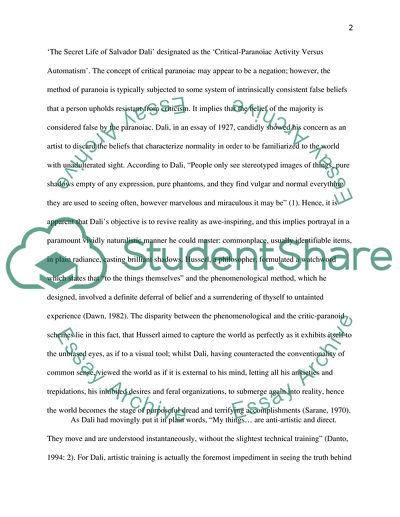Cite this document
(“Salvador Dalis Surrealist Concept of Paranoia Essay”, n.d.)
Salvador Dalis Surrealist Concept of Paranoia Essay. Retrieved from https://studentshare.org/visual-arts-film-studies/1548356-salvador-dalis-surrealist-concept-of-paranoia
Salvador Dalis Surrealist Concept of Paranoia Essay. Retrieved from https://studentshare.org/visual-arts-film-studies/1548356-salvador-dalis-surrealist-concept-of-paranoia
(Salvador Dalis Surrealist Concept of Paranoia Essay)
Salvador Dalis Surrealist Concept of Paranoia Essay. https://studentshare.org/visual-arts-film-studies/1548356-salvador-dalis-surrealist-concept-of-paranoia.
Salvador Dalis Surrealist Concept of Paranoia Essay. https://studentshare.org/visual-arts-film-studies/1548356-salvador-dalis-surrealist-concept-of-paranoia.
“Salvador Dalis Surrealist Concept of Paranoia Essay”, n.d. https://studentshare.org/visual-arts-film-studies/1548356-salvador-dalis-surrealist-concept-of-paranoia.


